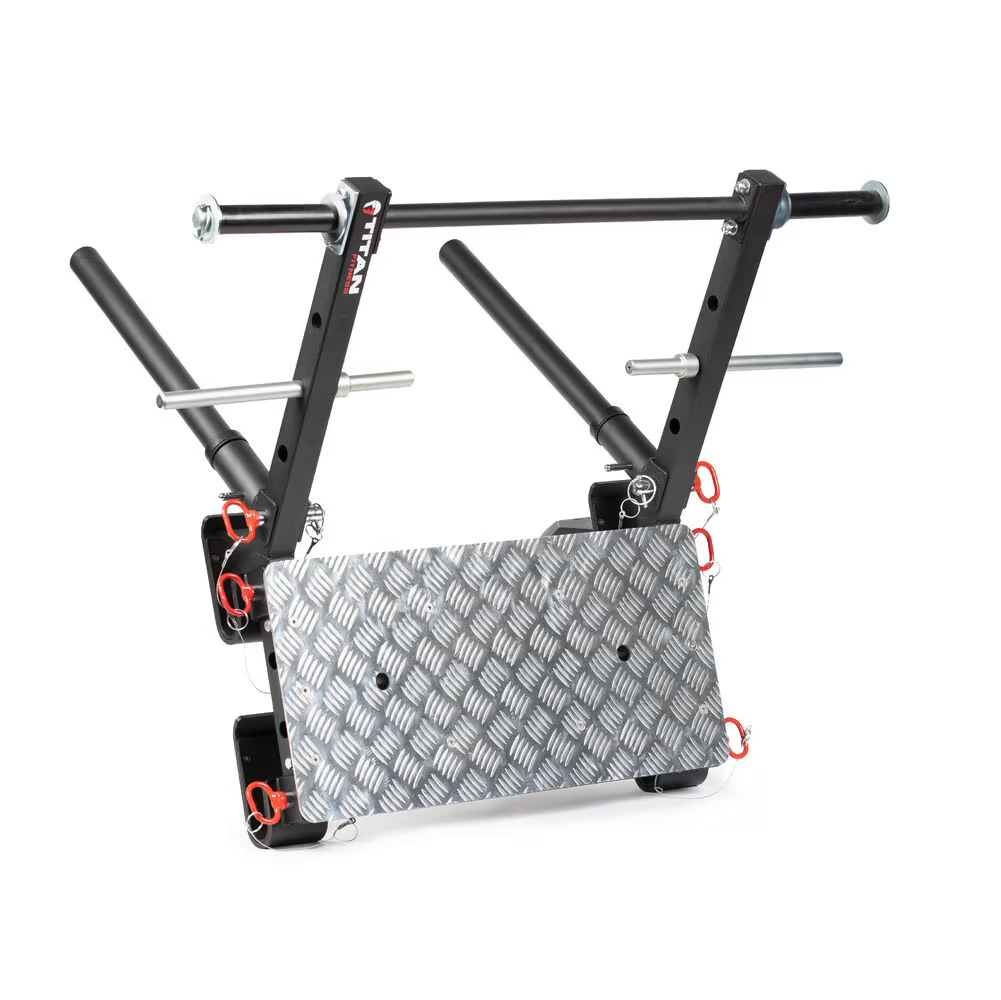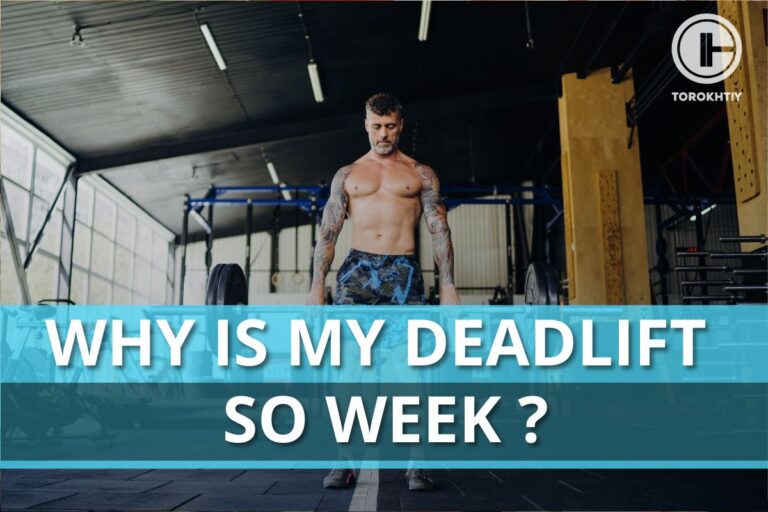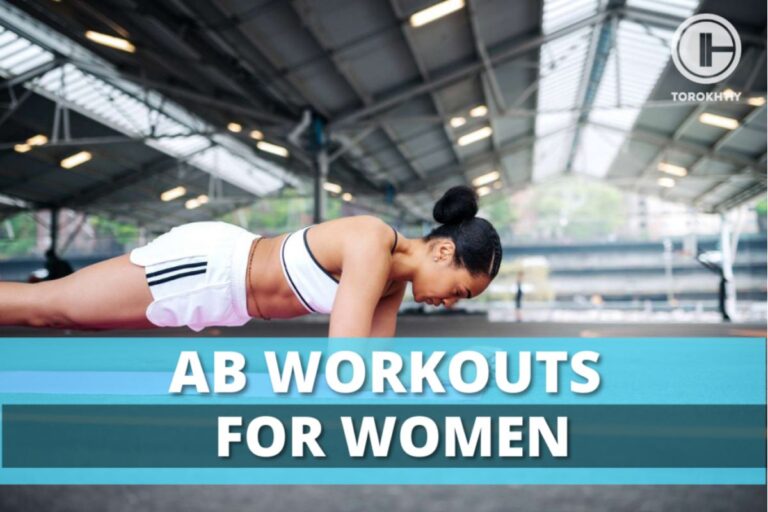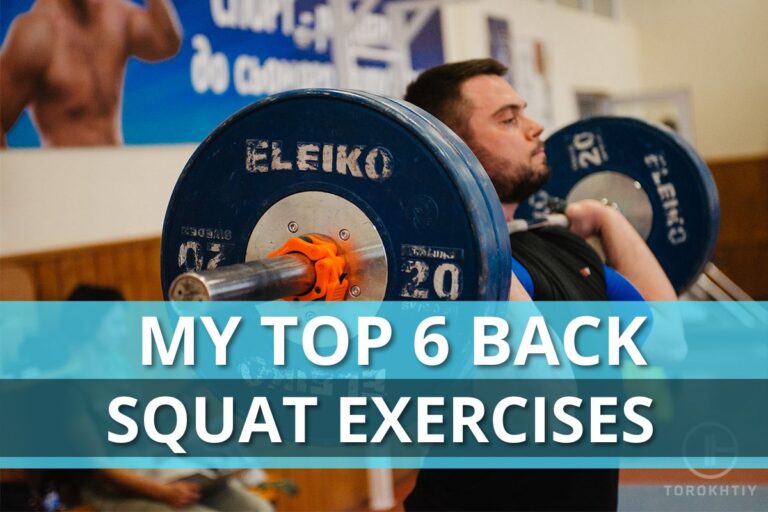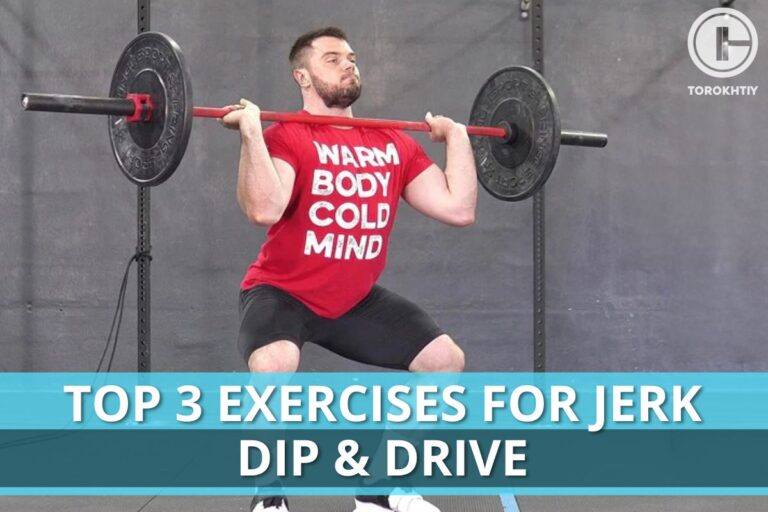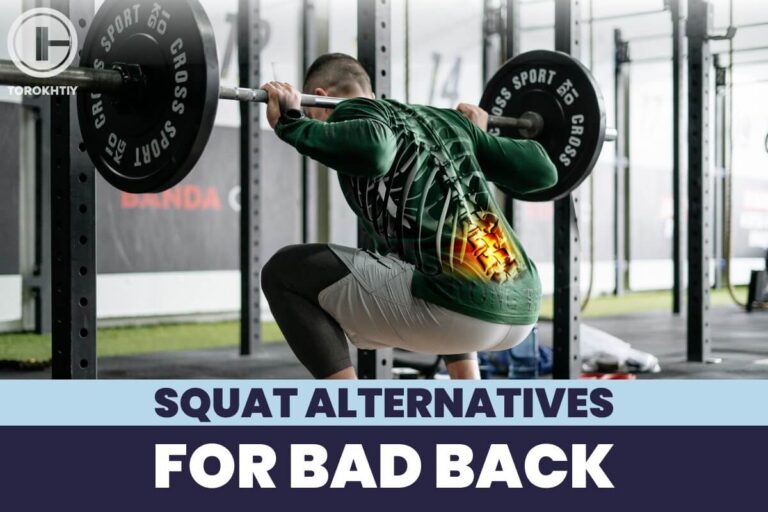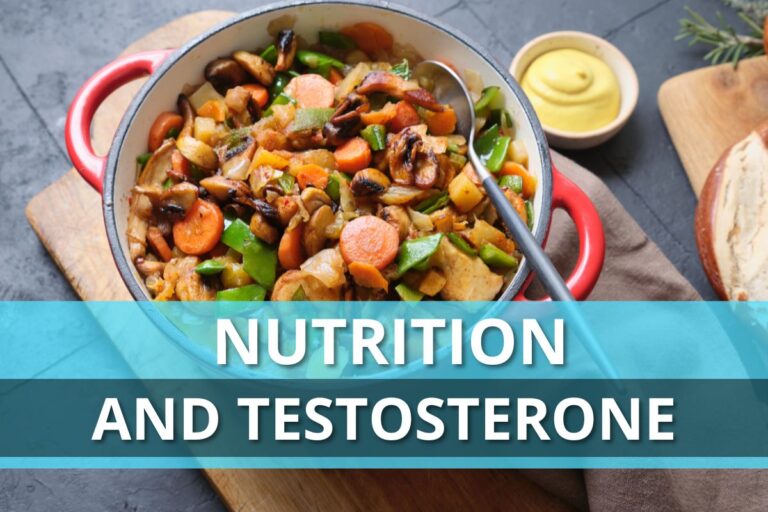What Muscles Does Leg Press Work?
You have probably seen the leg press machine everywhere in the gym, yet you are still intimidated to try it out. But once you find out what muscle leg press works, you’ll be more confident to try it.
Simply put, the leg press machine works on the important muscle groups involved in everyday activities like walking and running.
The leg press targets muscles in both the upper and lower bodies. Understanding what muscles the leg press works on will help you maximise your results from this powerful movement.
What Muscles Does Leg Press Work? The leg press machine works the quadriceps, hamstrings, gluteus maximus, and calf muscles. It’s a good alternative to a squat exercise, as it helps strengthen the hips and core muscles for improved balance and stability.
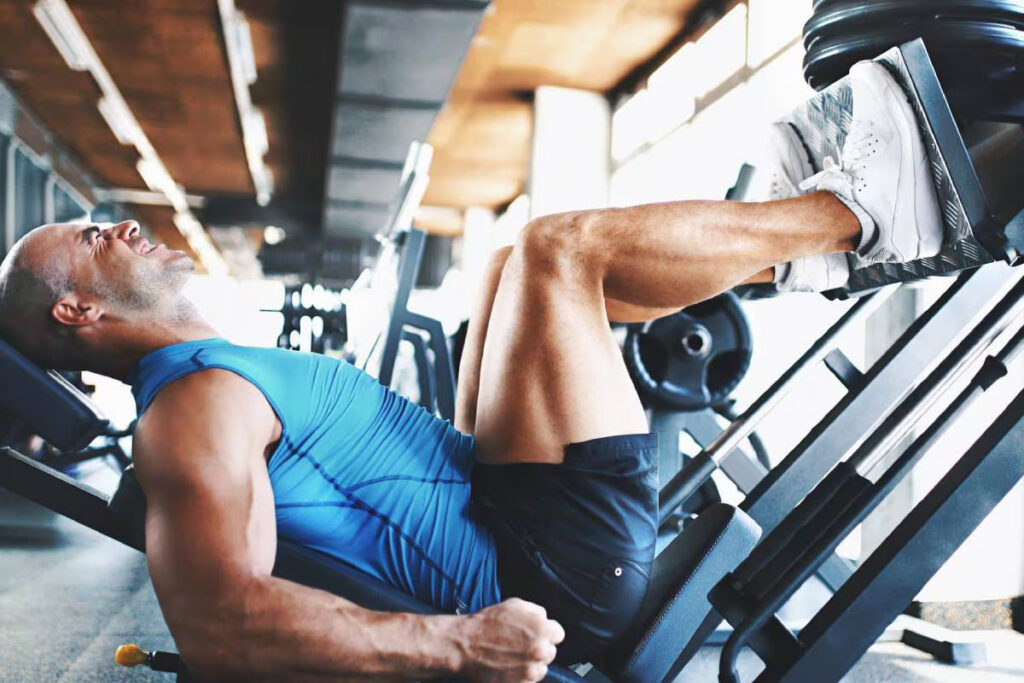
What Muscles Does a Leg Press Machine Work?
The leg press is a machine that lets you lie down on your back and press weight up with your legs. Your starting position is with your feet on a platform and the weight above your head.
The primary muscle groups worked by this exercise are your quadriceps, hamstrings, gluteus maximus, and calf muscles.
Hip flexors, inner thighs, and glutes are secondary muscles in seated leg press. Strengthening these muscles can also help to improve your balance and stability.
1. Lower Body
What does leg press work on? The leg press muscle groups consist of:
- The Quadriceps: The quadriceps are composed of four muscles (rectus femoris, vastus lateralis, vastus medialis, and vastus intermedius) located on the front of your thighs. When performing a leg press with proper form, you should feel a strong contraction in the quads when pushing the weight up.
- Hamstrings: These are the three muscles on the back of your thigh.
- Other muscle groups that are targeted include your glutes (the largest muscle group in your body), hamstrings (on the back of your thighs), calves (on the back of your lower legs), and core muscles (your abdominals and lower-back muscles).
The leg press machine is an effective and efficient way to strengthen and tone these lower body muscles, with the added benefit of working on your core stability. You can adjust the weight you are pressing so that it’s heavy enough to challenge your muscles but not too heavy to cause a knee injury.
Regular sets per week will make your lower body muscles stronger and more defined.
2. Upper Body
You can also do versions of the leg press that work for different muscle groups in the upper body. For example, adding a twist or turn to a leg press will help you work your oblique abdominal muscles and other upper-body stabilising muscles.
Overall, the leg press machine is an effective way to strengthen and tone your lower body muscles, although with some adaptations you can train your upper body muscles too.
What You Should Know?
Now you know what leg press works on. But it’s important to remember that it’s normal to feel some delayed-onset muscle soreness (DOMS) when doing leg muscle workouts and other activities. DOMS can happen up to 24–48 hours after a workout and last a few days.
To avoid injuries, it’s important to ensure your form is spot-on when doing a leg press. Your knees should stay in line with your feet, and you should avoid locking them at the top of the movement.
Finally, remember to warm up before any exercise and cool down afterward. This will help reduce the risk of injury and ensure maximum results from your workout!
Top 5 Benefits of Leg Press Workout Routines to Build Muscle
You’re probably thinking to yourself, “That all sounds incredible, but what’s in it for me?”
Here are the top 5 benefits of leg press workouts:
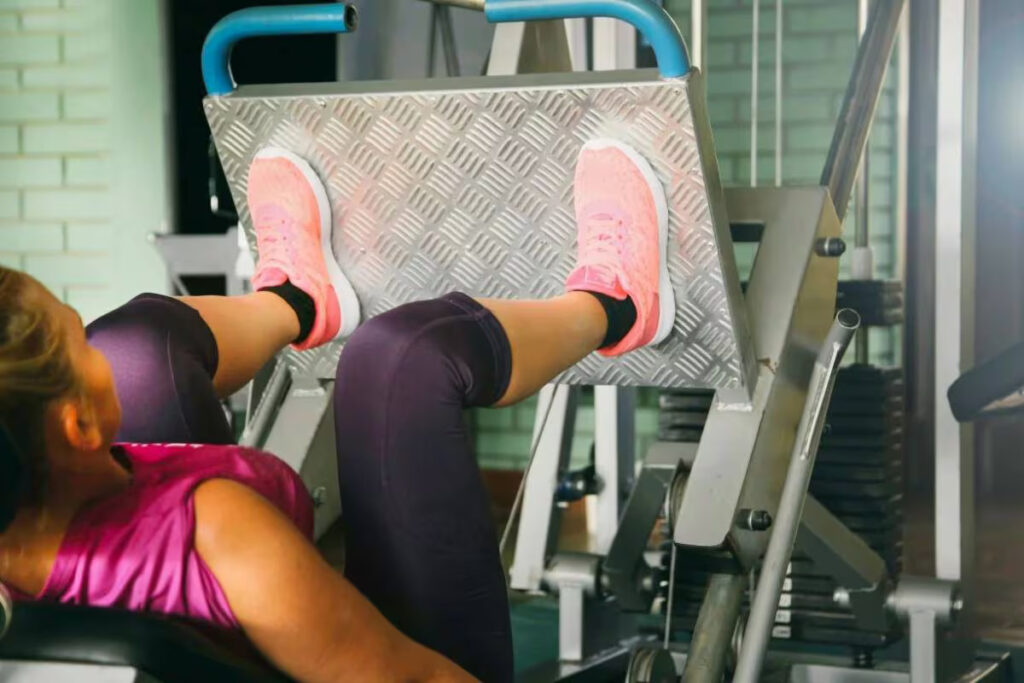
- Builds Muscle Mass – The muscles worked in the seated leg press help to build muscle mass.
- Improves Strength: The leg press muscle groups are important for everyday movements like walking, running, and jumping. Regular use of the leg press machine will help you become stronger in these activities.
- Increases Core Stability: While doing leg presses, your abdominal and lower back muscles must work hard to stabilise your torso. The leg press target muscles in your body’s core part, which can improve stability and balance throughout the entire body.
- Burns Calories: Since it’s a compound exercise that targets multiple muscle groups at once, leg presses can be an excellent way to burn calories quickly and efficiently while also building muscle mass.
- Safer than Squats and Lunges: Leg presses are a much safer alternative to exercises like squats or lunges as there is less stress on the lower back, whereas, with squats and lunges, the weight is placed directly on your spine.
How Long Does It Take To Build Muscle on the Leg Press Machine?
Eat Right
But how long does it take to see the result? It depends on various factors, such as your fitness level, age, and nutrition.
According to a 2000 study from The Journals of Gerontology, strength training has an equal effect on both men and women. So, if you stick to a leg press regimen and eat well, you should notice results in 6–8 weeks. To keep your muscles engaged, gradually increase your weight throughout this period.
For muscle rehabilitation, take rest days throughout the week. This is crucial because our bodies create muscle during rest periods between workouts.
What Results Cannot Be Achieved When Training on a Leg Press Machine?
There are certain results that cannot be achieved through the use of this machine alone. For example, the leg press does not engage the stabilizer muscles that are required for balance and coordination during functional movements.
Additionally, it does not provide the same level of core engagement as other exercises like squats or deadlifts. You may also find that relying solely on the leg press can lead to muscle imbalances and neglect of other important muscle groups, such as the calves or hip abductors.
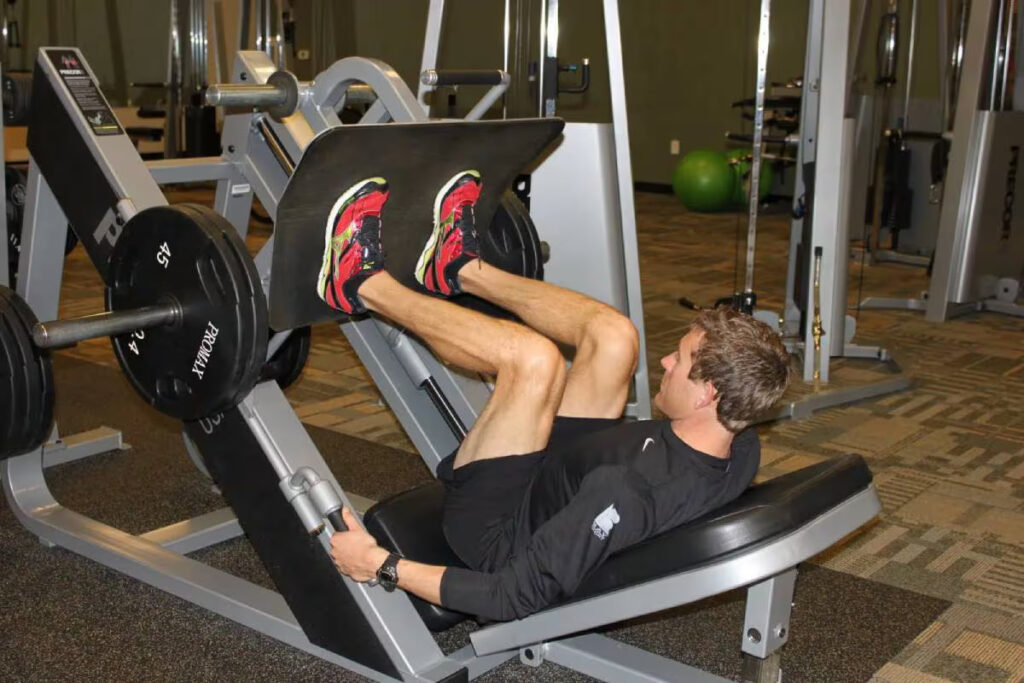
The Leg Press Machine We Recommend
If you have limited space at home, spending it on a machine that allows us to target multiple muscle groups at once is best. The Titan Fitness Stealth Leg Press Machine is a great addition to any home gym.
The frame is rock solid and provides plenty of stability, so you don’t have to worry about shifting or wobbling. It also has adjustable footplates, so you can customise the angle of my exercise for even more targeted results.
Check out the Titan Fitness Stealth Leg Press Machine to get the most out of your leg press workouts and develop lean muscle mass.
Leg Press Machine vs Smith Machine
1. The Leg Press Targets More Muscle Groups
The leg press targets muscles more than the Smith machine does. At the same time, the Smith machine allows users to isolate individual muscles and work on specific weak points.
2. Leg Press Is Easier to Use
Furthermore, the leg press is often easier to use due to its adjustable footplates and backrest, while the Smith machine requires more balance as it does not have these features. Ultimately, each option has its benefits, depending on what type of workout you’re looking for!
Leg Press Machine vs Hack Squat Machine
1. Hack Squat Targets More Muscle Groups Than the Leg Press
When comparing the hack squat to the leg press, the primary distinction is the number of muscles used. The hack squat engages all major muscles in the lower body to some extent, with a specific emphasis on the quadriceps femoris. The primary muscles used in leg press are the quads, glutes, hamstrings, and calves.
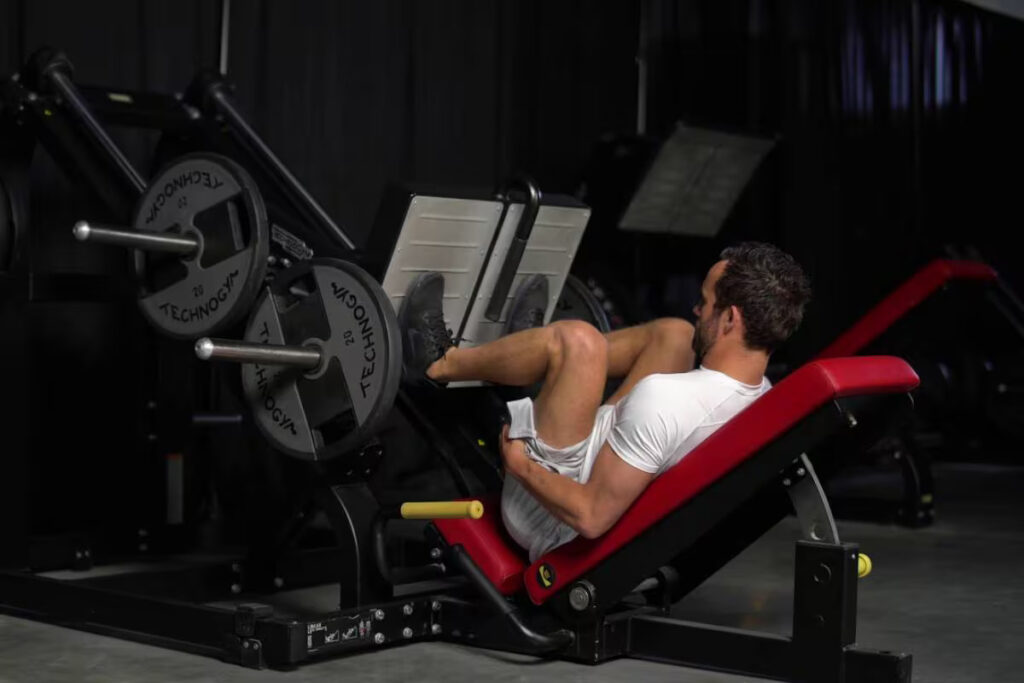
2. You Can Target Specific Muscle Groups With the Leg Press
We can conclude that the leg press and hack squat are both compound exercises that work for multiple muscle groups, however the leg press machine allows users to isolate individual muscles and work on specific weak points.
3. The Leg Press Offers More Variations
The leg press also offers adjustable footplates, a backrest, and a range of motion for more targeted results, whereas the hack squat does not.
Exercising on Leg Press Machine vs Barbell Back Squat
1. Leg Press Machine Offers Improved Muscle Isolation
They are both great exercises for lower body development. However, the leg press is a more versatile and effective quad isolation than the back squat, which also engages the glutes, hamstrings, and abdominals.
2. The Leg Press Offer More Control
The leg press is also easier to do with control than the barbell back squat since it demands less balance and stability.
Overall, muscles used in leg press will benefit from the increased range of motion and control and the decreased risk of injury. It’s crucial to include both in your program because of their positive effects on muscle development and leg strength.
FAQ
Is a Leg Press Better Than Squats?
It depends on your fitness goals. The leg press is great for developing quad muscles,hamstrings and glutes, while squats are better for overall lower body development. Both exercises are beneficial and should be included in a well-rounded workout program.
Is the Leg Press a Full-Leg Workout?
The leg press is a full-leg workout. It primarily targets and isolates the quadriceps muscles, glutes and adductors, while other muscle groups, such as the hamstrings and calves, are engaged, just not as much.
It’s important to incorporate squats, deadlifts, and other multi-joint exercises into your routine, to get a complete lower-body workout.
Conclusion
We hope this article helps you understand what muscles leg press works. This is the one must-have, versatile tool for any home gym. So, be sure to include it in your strength development routine!
Feel free to comment if you have questions about this article or your fitness journey.
Also read:
- Benefits of Leg Press Machine
- Hack Squat vs Leg Press
- Leg Extension vs Leg Curl
- How Much Does a Leg Press Weigh
- Best Leg Extension Machine
References:
- Hip Exercises for Building Adductor Strength and Preventing Injury // Healthline: https://www.healthline.com/health/adductor-exercises
- Delayed onset muscle soreness : treatment strategies and performance factors // Pubmed: https://pubmed.ncbi.nlm.nih.gov/12617692/
- Does warming up prevent injury in sport? The evidence from randomised controlled trials? // Pubmed: https://pubmed.ncbi.nlm.nih.gov/16679062/
- Leg Presses vs. Squats: The Pros and Cons // Healthline: https://www.healthline.com/health/exercise-fitness/leg-press-vs-squat#squat-pros-and-cons
- Effects of Strength Training and Detraining on Muscle Quality: Age and Gender Comparisons // Healthline: https://academic.oup.com/biomedgerontology/article/55/3/B152/2947975
- Healthy Buffs: Making gains with your rest days // Colorado: https://www.colorado.edu/today/2018/11/13/healthy-buffs-making-gains-your-rest-days
- Want Monster Quads? Time to Learn the Hack Squat // Menshealth: https://www.menshealth.com/fitness/a28133625/hack-squat/
- How to Do Leg Press: Muscles Worked & Proper Form // Strengthlog: https://www.strengthlog.com/leg-press/
Why Trust Us?
With over 20 years in Olympic Weightlifting, our team does its best to provide the audience with ultimate support and meet the needs and requirements of advanced athletes and professional lifters, as well as people who strive to open new opportunities and develop their physical capabilities with us.
By trusting the recommendations of our certified experts in coaching, nutrition, dietology, and sports training programming, as well as scientific consultants, and physiotherapists, we provide you with thorough, well-considered, and scientifically proven content. All the information given in the articles concerning workout programming, separate exercises, and athletic performance, in general, is based on verified data. We ensure that you can rely on our professionals’ pieces of advice and recommendations that can be treated as personalized ones which will benefit you and fully meet your needs.
The product testing process is described in more detail here
Author: Ihor Shymechko
Pro Olympic Weightlifter, Coach
Best Results: Snatch – 208 kg,
C&J – 240 kg
Ihor has been a professional weightlifter since 1996, boasting over two decades of competition experience. His notable achievements include clinching the European Championship in 2009 and securing a silver medal in the 105kg division at the Senior World Championships in 2011. Ihor represented his country in the 2008, 2012, and 2016 Summer Olympics. After retiring from competitive weightlifting, he transitioned to coaching, leveraging his vast experience to guide athletes who now compete on both national and international stages.

